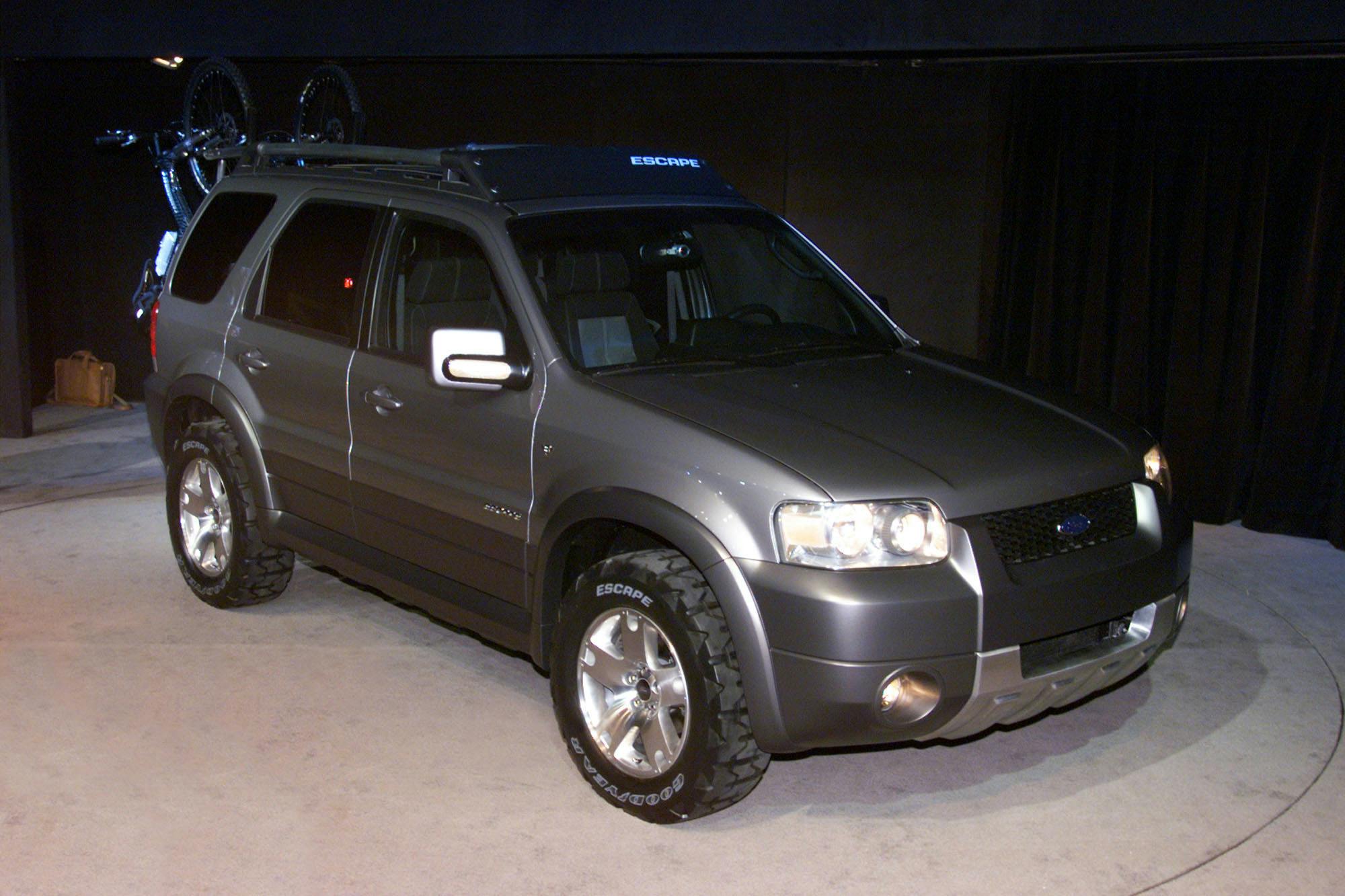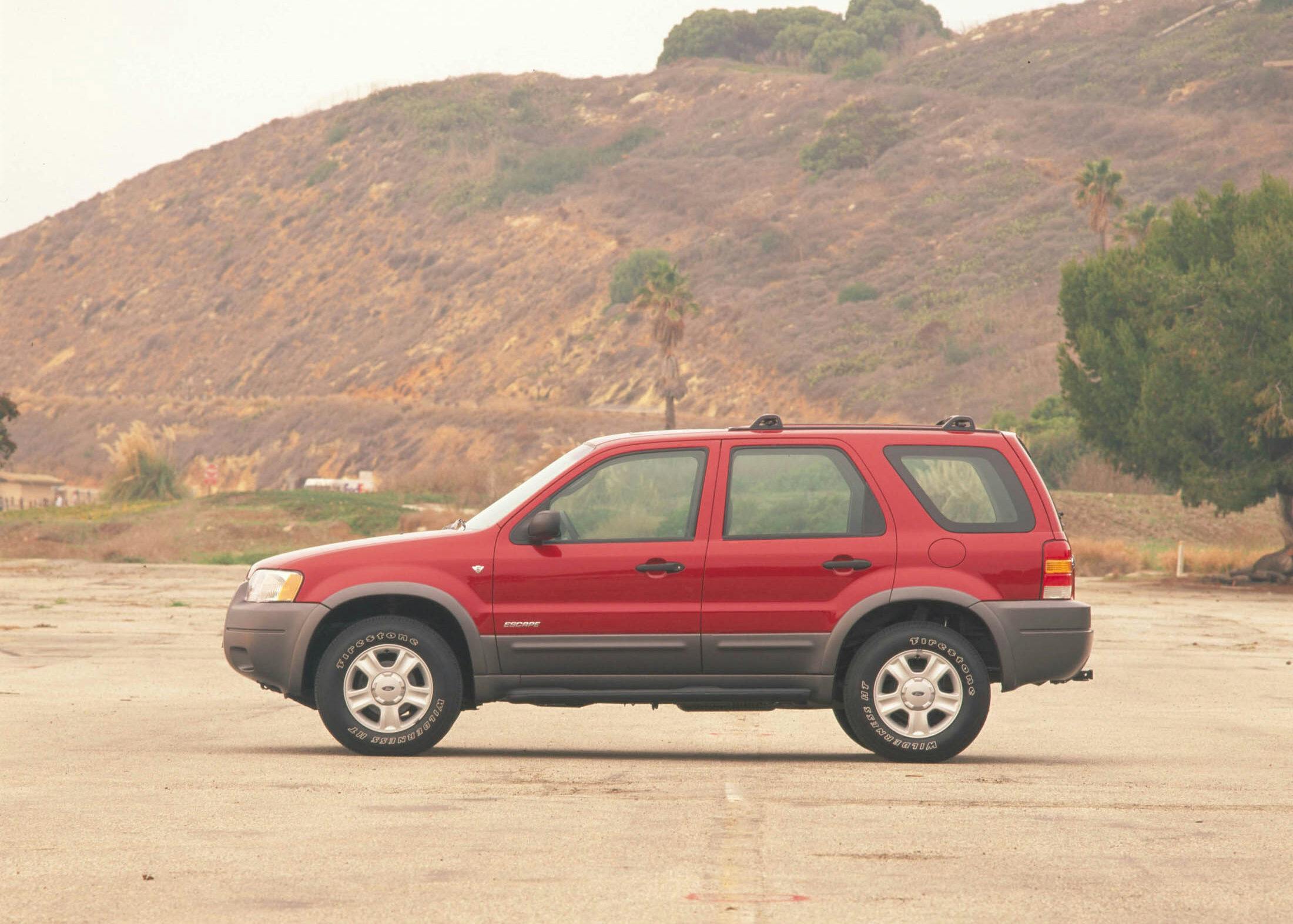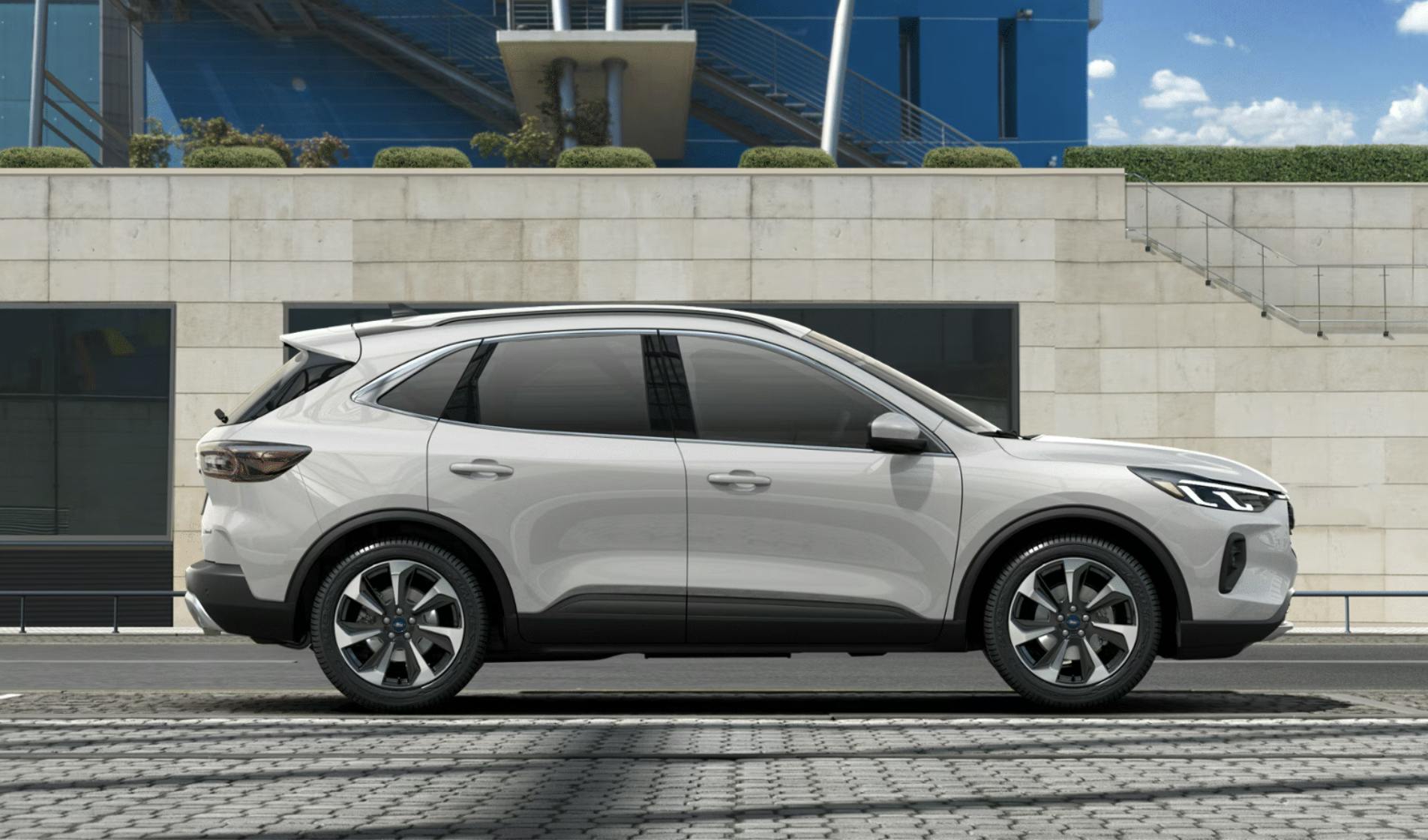Media | Articles
Vellum Venom Vignette: We’re Never Leaving the Escape Room
Car design is much like fashion, as what was popular two or three decades ago comes back into vogue with a new generation of buyers. Often that rebirth takes the original idea and jacks it up with an ample dose of steroids. Consider the resurgence of shoulder pads, which made a statement in the 1930s-40s, turning into a bold proclamation in the 1980s when paired with an icon like Grace Jones.


The shoulder-pad-equipped, upright Ford Bronco Sport is the reincarnation of the good old days of the original Ford Escape. It uses Ford’s C2 platform just like the current Ford Escape, but targets the same cosplay-outdoorsy-mall crawling demographic of the Mazda-derived original. Automotive News reported the Escape will die in 2025, focusing (as it were) production on the more appealing Bronco Sport.
(SEO-savvy Ford dealers are already spinning this into a benefit for used car shoppers, as that’s a space where car design plays second fiddle to value.)
When refreshing an icon, product planners and designers often amp up the rhetoric, and slapping on the Bronco Sport name a fashionable 20 years late seems like a brilliant move. Not just because there’s also a new Bronco that draws from the original design, but because said Bronco ensures the “new Escape” has built-in retro DNA they can graft on a body similar to Ford’s original cute crossover.

Looking at a concept Escape from back in the day proves the similarities. The overtly knobby tires (with Escape lettering on the sidewalls) suggest this tall vehicle with upright pillars could go on the same trails where you’d find body-on-frame trucks. But the stylized, plasti-chrome front skid plate and beefy, unfinished bumper is clearly aimed at the new era of SUV consumers in the suburbs. To this concept’s credit, the original 4×4 Escape did have a locking center differential. Trail-worthy style from designers was indeed matched with a modicum of substance by engineers, but reality quickly transitioned into fantasy for the little Ford trucklet.
Marketplace
Buy and sell classics with confidence


And the proof is in the pudding roof pillars, as the original Escape had a truck-like D-pillar, able to carry tall boxes like the popular Explorer, Cherokee, and Suburbans before it. The C-pillar is raked appropriately for a CUV, suggesting this was a softer, more car-like cabin than those other vehicles with school-bus-like frames and sketchy handling to boot. The recipe was delicious, and clearly re-used for the Bronco Sport.
Sadly, back then we also needed excessive side cladding (to the point that negative area was needed so the doors could open) to prove we were cooler than people in a Taurus or Impala. The Bronco Sport avoids that trap, with slimmer cladding and negative area stamped into the body as a styling feature, not a stop gap repair.

Then there’s the current Escape, with its swollen nose, low belt line, and a D-pillar that shows how pointless most modern CUVs are in terms of cargo-carrying practicality. The styling is far from a bad design (though reviews for the whole car are disparaging), but it is clear the Bronco Sport has far more curb appeal as a small Ford utility.
Then and now, the 2001 Ford Escape’s quintessentially crossover body rules the roost. Ford likely needed to flee from the mistakes made over the last 20 years, so the Bronco Sport naturally absorbed the Escape’s territory. Doing so ensured the baggage of the Escape name will be erased. Forever.

Which is a shame, because the parallels between Bronco Sport and the 2001 Escape prove the well of creativity ebbs and flows, just like fashion trends. I’ve driven several first-generation Escapes from showroom fresh to fully depreciated with 200,000 miles and broken engine mounts. They all left me feeling that Ford nailed the pillars of sport (gutsy Duratec V-6, stellar Mazda platform), and utility (upright D-pillar, adequate room) for a vehicle that needed to haul five passengers in any weather. If I could get my hands on another, I’m sure a back-to-back Vellum Venom-ing with it and a new Bronco Sport would draw even more parallels than the roof pillars. It was just that timeless.
RIP Escape: You won’t get the credit, but we’re glad the Bronco Sport put you back on your perch.



















I could see “Escape” becoming a trim package on a future Bronco Sport, if it doesn’t become a smaller EV version of what it originally was.
Yes, it’s been interesting to see the Escape and Bronco Sport present two wildly divergent paths for compact crossover styling, and the market has spoken. There were few takers, other than fleets, on the Escape and its “We have Porsche Macan at home” styling. Meanwhile, the Bronco Sport matches the butch, boxy styling of another North American favorite, the Toyota RAV4.
Speaking of fleets, I rented an Escape earlier this year, in Houston no less. It was an ST-Line with the 1.5-liter EcoBoost 3-cylinder. I found it so miserable and dangerously underpowered a conveyance, *especially* in Houston, that I immediately took it back to Avis and exchanged it for a Hyundai IONIQ 5 AWD, which I loved.
I cannot imagine that the boxier, probably-heavier, Bronco Sport with that same engine is any better; it’s probably worse.
I do hope that with Ford discontinuing the Escape and with the Maverick newly offering a hybrid AWD variant…that a Bronco Sport Hybrid with AWD will be forthcoming. Possibly a Bronco Sport Energi, as well.
The Escape was a CUV that disappeared in a very competitive segment. The move to the more butch retro looks restored some identity but the quality issues Ford has been seeing has not helped.
Also naming more than one model Bronco is poor use of name equity. It failed Olds Naming everything Cutlass.
The model making a shocking move in segment is the Trax from Chevy. They removed the AWD and vastly increased sales with a lighter cheaper package. It has really made an increase in sales. The Buick Envista has made its own mark.
The Escape will live on with different names and bodies but the platform is still here for better or worse.
Honda and Toyota still dominate . Hyundai goes after price. GM is after price and styling. This is not going to get easier. Ford magnet get bucked off this Bronco.
Fortunately, my 2019 Escape (the daily appliance) has the 2.5L without the eco-crap, and it’s been handy; though Ford made the engine mounting weaker, if anything. Every part of that system requiring replacement @ 97,000 miles. But I’d rather have my old ’93 Pathfinder back, had it not been totaled from a wreck after 226,000 reliable and enjoyable miles.
The Escape is dead. Long live the Bronco Sport Escape?
I think they shoulda called it the Escape Bronco. They should all come with white trim. Or a white roof. Few will get the joke, everyone else will enjoy a nice CUV that looks like a CUV.
Ah yes the Escape. Along with vehicles like the Isuzu Vehicross, they helped destroy the automotive landscape and usher in this god awful era of CUV’s. When big and boxy wasn’t cool so everything became oblong and misshaped, ugly and useless.
The author lost me when he compared loading boxes into this little vehicle to a Suburban.
Excuse me?
“No honey we have a Suburban at home”
You’re talking about a different universe. That god awful V6 barely pushed 20 MPG when a 4.6 V8 will do roughly the same (come at me, I own one. Averages 20 MPG all city and I’ve owned 4 Ford V6’s and several othe V6’s and V8’s)